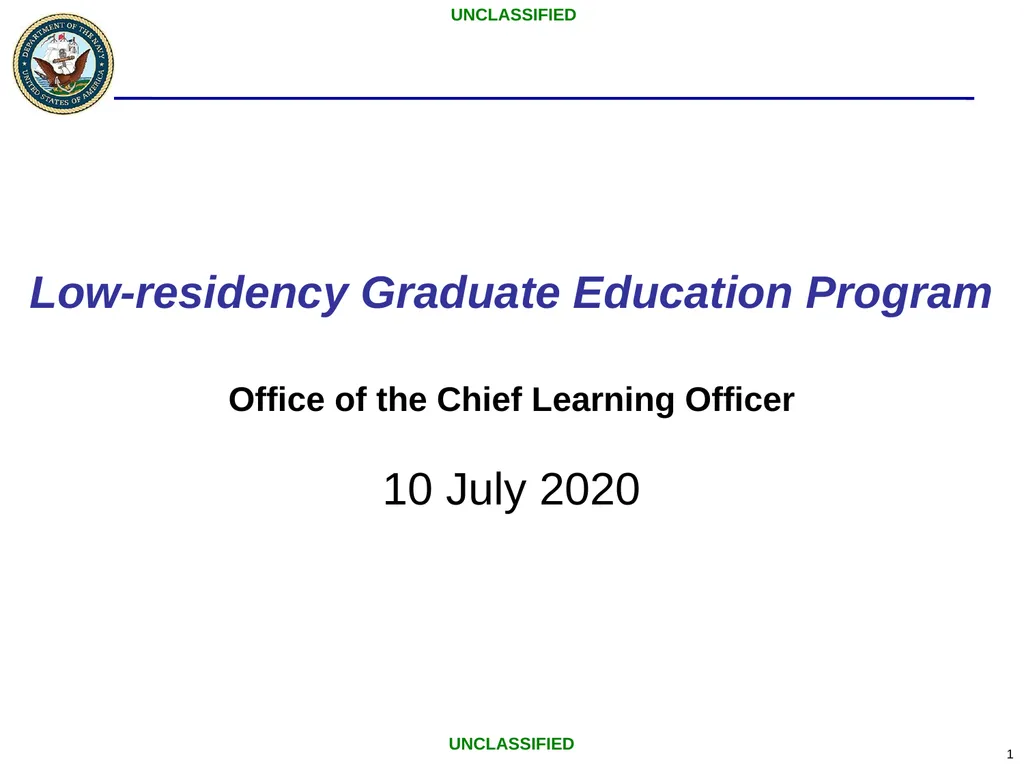
Low-residency Graduate Education Program Office of
Author: aaron | Published: 2025-08-06
Description: Low-residency Graduate Education Program Office of the Chief Learning Officer 10 July 2020 1 2 Program Purpose Purpose: The Low-residency Graduate Education Program (LGEP) will allow Naval officers to pursue world-class low-residency
Download Presentation
Download the PPT/PDF: Download
Transcript:
Loading transcript…